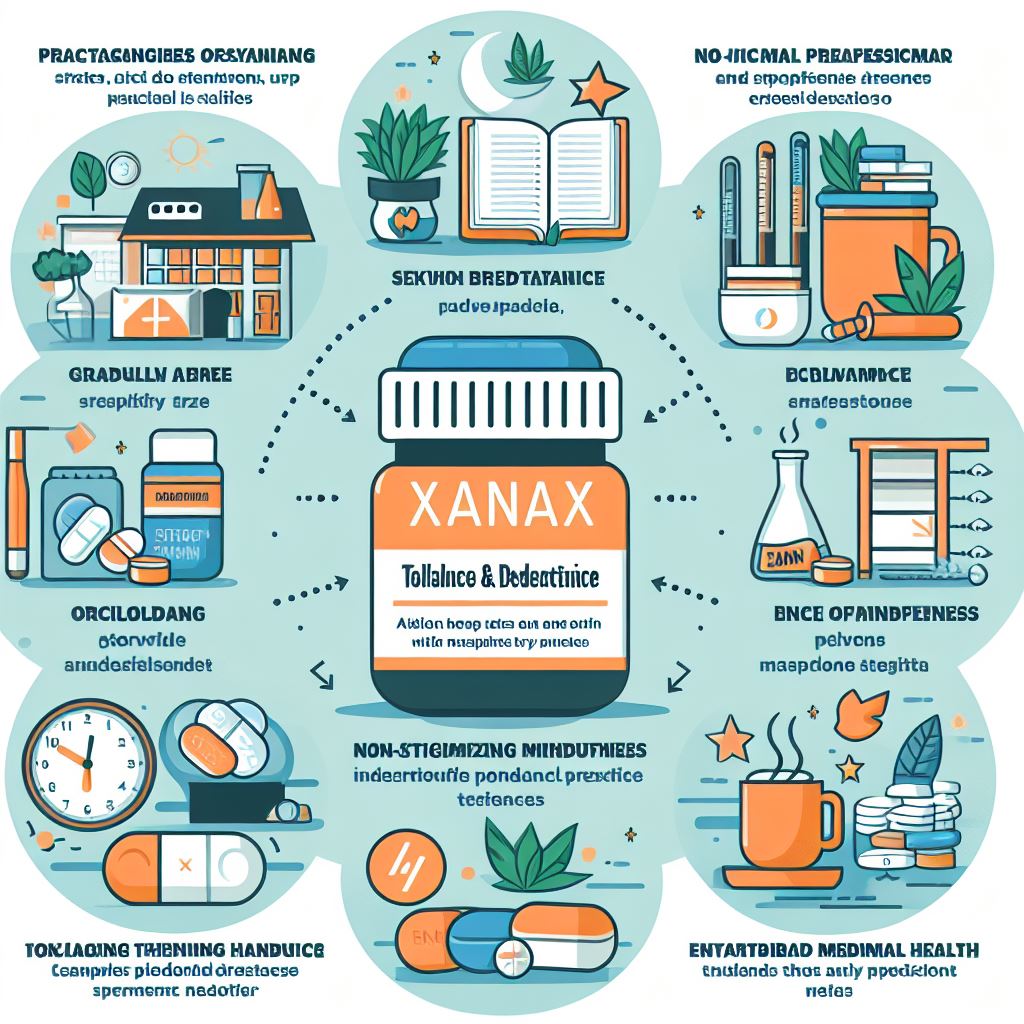- Your cart is empty
- Continue Shopping
Managing Xanax Tolerance and Dependence

Xanax, known generically as alprazolam, is a commonly prescribed medication for managing anxiety and panic disorders. While it is effective in treating these conditions, there is a risk of developing tolerance and dependence when Xanax is used for an extended period or in higher doses. In this comprehensive guide, we will discuss strategies for managing Xanax tolerance and dependence, including reducing the dosage, seeking medical advice, and exploring alternative treatment options.
Understanding Xanax Tolerance
Tolerance occurs when the body becomes accustomed to the effects of Xanax, requiring higher doses to achieve the same therapeutic benefits. This can lead to increased dosage over time, which may heighten the risk of dependence and adverse effects.
Signs of Xanax tolerance include:
- Reduced effectiveness of the prescribed dose.
- Increased anxiety or panic symptoms despite taking the medication.
- Escalation of dosage to achieve the desired effects.
To manage tolerance, it is essential to consult with a healthcare professional. They can guide you through a gradual reduction of the dosage or suggest alternative medications or therapies.
Recognizing Xanax Dependence
Dependence on Xanax can develop when the body becomes reliant on the medication to function normally. This dependence can manifest as physical or psychological reliance, making it challenging to discontinue the drug.
Signs of Xanax dependence include:
- Withdrawal symptoms such as tremors, sweating, or anxiety when missing a dose.
- Cravings for the medication.
- Need for higher doses to achieve the desired effects.
Managing dependence requires a careful, monitored approach to tapering off the medication. Abrupt discontinuation can result in severe withdrawal symptoms, which may be life-threatening.
Strategies for Managing Xanax Tolerance and Dependence
- Consulting with a Healthcare Professional
- A healthcare provider can assess your current usage of Xanax and recommend a tapering schedule or alternative treatments.
- They may also suggest therapy or counseling to address the underlying causes of anxiety and panic disorders.
- Gradual Dose Reduction
- Reducing the dosage of Xanax slowly and under medical supervision can help manage tolerance and dependence.
- A structured tapering plan will minimize withdrawal symptoms and improve the chances of a successful discontinuation.
- Alternative Medications
- In some cases, switching to other medications such as buspirone or SSRIs may be an effective option.
- These alternatives may offer similar therapeutic benefits with a lower risk of tolerance and dependence.
- Cognitive Behavioral Therapy (CBT)
- CBT is a proven therapeutic approach for managing anxiety and panic disorders.
- It can help individuals learn coping strategies and reduce reliance on medication.
- Lifestyle Changes
- Incorporating lifestyle changes such as regular exercise, a healthy diet, and stress management techniques can improve overall mental health.
- These changes may reduce the need for Xanax and enhance the effectiveness of other treatments.
- Mindfulness and Meditation
- Practicing mindfulness and meditation can help individuals manage anxiety and stress without relying solely on medication.
- These techniques promote relaxation and self-awareness, providing additional tools for coping.
- Support Groups
- Joining a support group can provide encouragement and shared experiences for individuals struggling with Xanax dependence.
- These groups offer a safe space for discussing challenges and successes.
Warning Signs of Severe Dependence
In severe cases of Xanax dependence, immediate medical attention may be required. Watch out for the following warning signs:
- Severe withdrawal symptoms such as seizures, hallucinations, or confusion.
- Inability to reduce dosage without experiencing intense cravings or anxiety.
- Impacts on daily life such as difficulty functioning without the medication.
If you experience any of these warning signs, seek emergency medical care immediately.
Conclusion
Managing Xanax tolerance and dependence requires a multifaceted approach that includes medical supervision, lifestyle changes, and alternative therapies. By working closely with a healthcare provider and making informed decisions about your treatment, you can successfully reduce your reliance on Xanax and improve your overall well-being.
If you or someone you know is struggling with Xanax tolerance or dependence, do not hesitate to seek professional help. With the right support and resources, it is possible to manage these challenges effectively.
